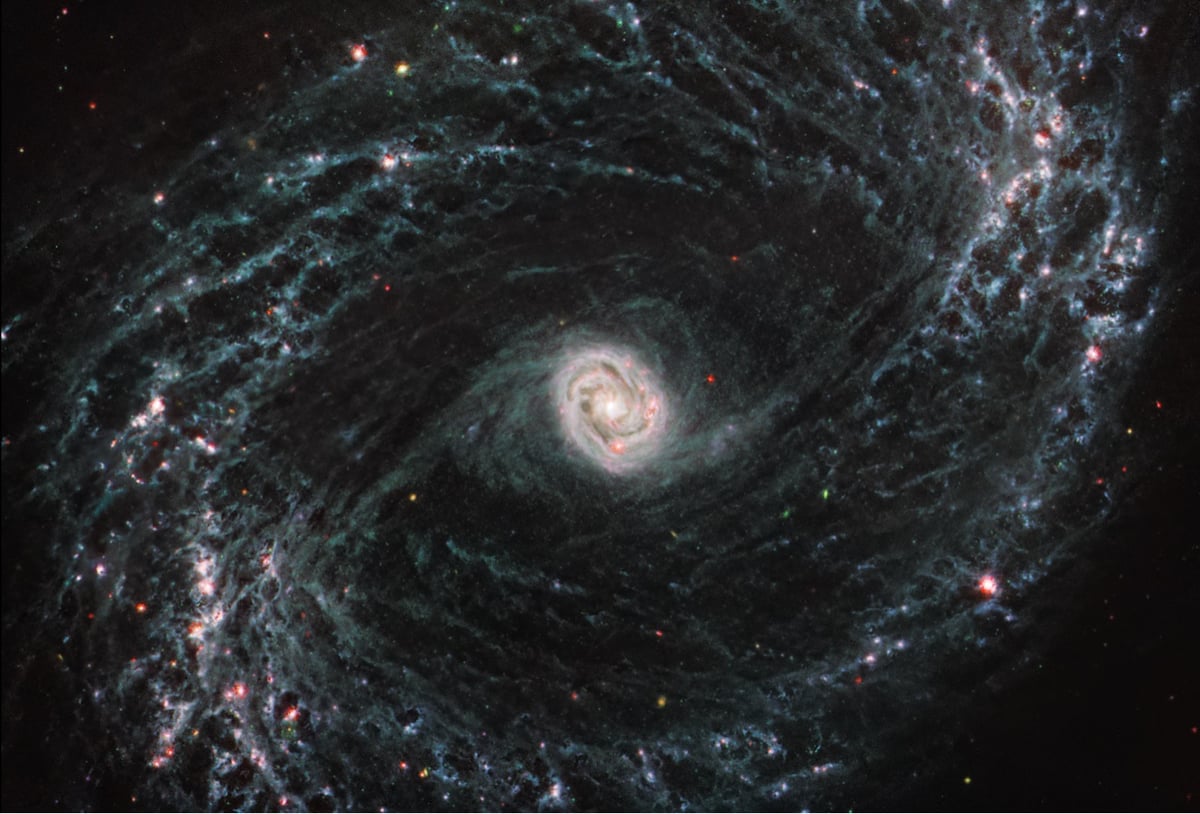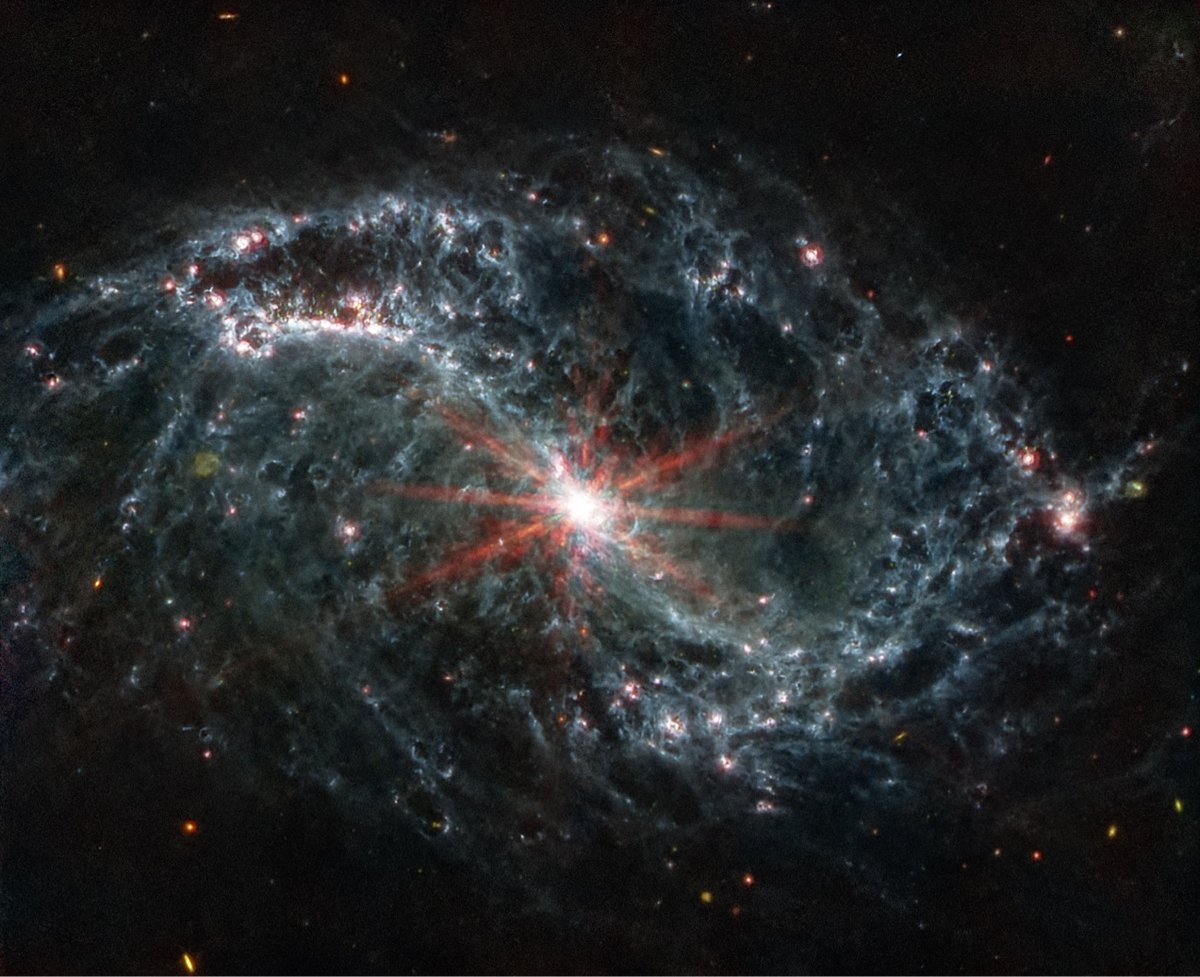Unprecedented Infrared Photos of Nearby Galaxies


I don’t know how kottke.org isn’t going to turn into a JWST-only blog — it seems like there’s some never-before-seen imagery released every other week that just absolutely knocks my socks off. Like these unprecedented images of nearby galaxies that were taken to help study how individual stars affect galactic structure.
The saying goes, ‘From a tiny acorn grows the mighty oak.’ This is accurate not just here on Earth, but in our solar system and beyond. Even on a galactic scale, where individual stars and star clusters can sculpt a galaxy’s overall structure. Scientists say NASA’s James Webb Space Telescope is perfectly primed to study these phenomena, and the first data is astounding astronomers.
New imagery from Webb’s Mid-Infrared Instrument is revealing never-before-seen details into how young, newly forming stars influence the structure of the gas and dust of nearby galaxies, and therefore how they evolve over time. Areas of galaxies that once appeared dim and dark in visible light, now under Webb’s infrared eye, are glowing cavities and huge cavernous bubbles of gas and dust.





Stay Connected